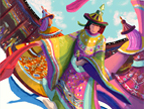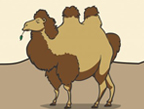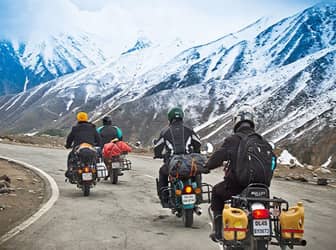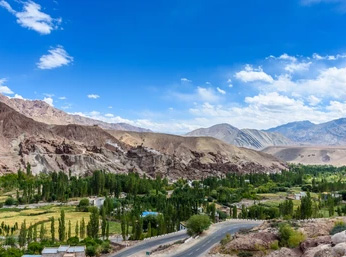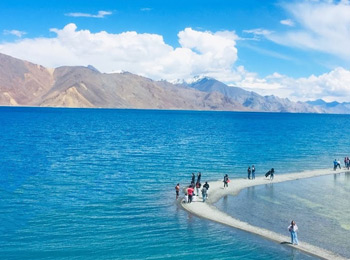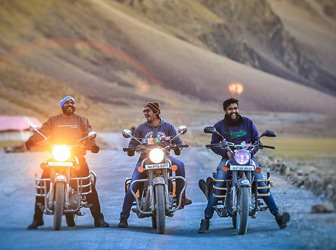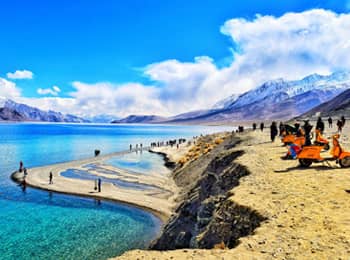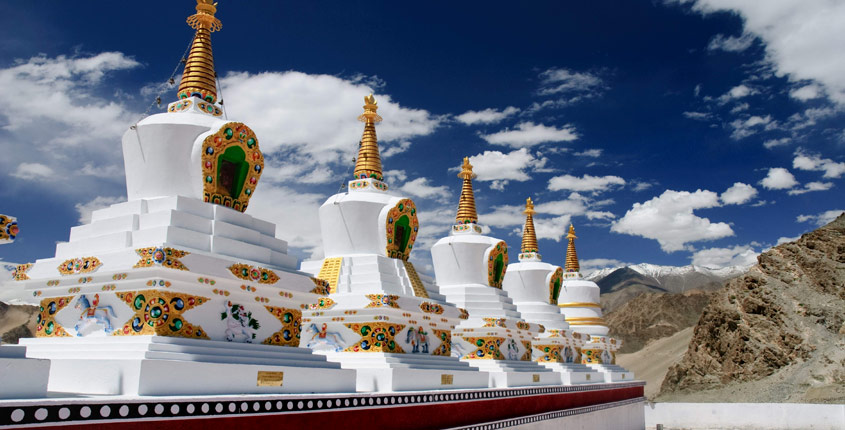
Thiksey Gompa
![]()
Among the many things that Ladakh is famous for are its monasteries. You know what I’m talking about if you have been to Ladakh. Those lovely structures perched on outcrops give an air of timelessness. If you haven’t been to Ladakh, it’s worth knowing that the monasteries in Ladakh are fascinating places to visit. One such monastery is Thiksey Monastery, located at an altitude of almost 3,600m in the Thiksey village. Discover the serene beauty and spiritual richness of Thiksey Gompa, a prominent Buddhist monastery nestled in the picturesque landscape of Ladakh.
The Thiksey monastery, painted in red, ochre, and white, blends well with the surrounding landscape. At first sight, you will be surprised by its strong resemblance to Potala Palace in Lhasa, Tibet. Visiting the monastery, which houses several attractions within it, can be a rewarding experience. It offers excellent opportunities for sightseeing and exploration. If you have been planning a trip to Ladakh, this Thiksey monastery travel guide provides essential details, travel tips, and insights to ensure an enriching visit to this cultural gem. However, planning a visit to Thiksey Monastery can be seamless with the help of travel experts from Leh Ladakh India. Our experts will assist you with customized Ladakh itineraries and seamless travel arrangements. So, make plans to delve deep into the heritage of Thiksey Gompa and embrace its tranquility.
History of the Thiksey Monastery
You may have often wondered about the history of Thiksey Monastery and why it is called so. According to the famous tale, Jangsem Sherab Zangpo (a 15th-century Tibetan Buddhist monk), along with his disciple, Palden Sherab, were offering prayers with a ritual cake at a spot which was located about 3km from where the Thiksey Monastery today stands. Out of nowhere, to their surprise, a crow grabbed the cake and flew away with it. After searching for the cake for some time, they found the ritual cake placed at the top of the hillock in the same condition.
The Buddhists believed this to be an auspicious sign and decided to build a monastery at that very spot. The name of the monastery, Thiksey, which means “perfect order,” is derived from the perfect order in which the crow placed the cake.
What to See Inside the Thiksey Monastery
Visiting the Thiksey Monastery, Ladakh, will leave you with beautiful memories. Apart from the opportunities for exploration and sightseeing, the Thiksey Monastery is a great place to learn about several facets of Buddhism. The monastery is home to ten temples, a nunnery, an assembly hall, and a home for monks. At the entrance, you are greeted by the statue of the protector deity. You can enjoy spectacular views of the Indus Valley floodplains from here.
One of the main attractions inside the Thiksey Monastery is the Maitreya Buddha. The statue is almost two stories tall and is a splendid piece of architecture. The other attractions that will interest you immensely are the two temples, Tara Temple and Lamokhang Temple. Tara Temple is a small temple dedicated to the goddess and houses 21 images of this deity. The walls of this temple are adorned with exquisite marvels and are a visual treat to the eyes.
Lamokhang Temple is another place that fascinates tourists. It's home to several scriptures, including Stangyur and Kangyur. It’s important to note that women are not allowed to enter this temple. Inside the temple is a school where young boys train to become lamas. Another attraction is the large pillar with Lord Buddha’s images engraved. A nunnery is also located inside the Thiksey Gompa.
Festivals held at Thiksey Monastery
During your visit to the Thiksey Monastery, you should not miss the chance to attend the Gustor Festival. This annual festival is held in the monastery from the 17th to the 19th day of the ninth month of the Tibetan calendar (October-November).
As a tourist, you will find the various rituals of the festival exciting and delightful. One is the mask dance, popularly known as the Cham Dance, which is an essential part of this ritual. Other traditional Tibetan musical instruments also accompany the dance. Performers wearing masks delight the audiences with their gracious dance moves.
It should be remembered that this choreographed dance is performed only by lamas. The festival ends by burning an effigy, which symbolizes evil. This interesting dance accompanies musical instruments like cymbals, old horns, bells, conch shells, and others.
Best Time to Visit Thiksey Monastery
The best months for visiting the Thiksey Monastery, Leh, are October and November. After November, however, the place will remain closed and reopen only in May. Try visiting the monastery in the early morning. Doing so will allow you to enjoy the unique rituals of the monastery. Many tourists visit the monastery in the morning to witness the morning prayers at Thiksay Monastery.
Entry Fee of Thiksey Monastery
The entry fee at Thiksey Monastery is ₹30-50 for adults and ₹10-20 for children. The price is the same for both locals and foreigners. There is no additional fee for carrying a camera. However, these fees can vary, and it's always a good idea to check the most current rates before planning your visit.
Opening and Closing Timings
Thiksey Monastery is open from 7 a.m. to 7 p.m. every day of the week. However, if you want to participate in the morning prayers, you should visit the monastery early in the morning.
- Passes
- Lakes
- Monasteries
- Attractions
- How to Prepare for Ladakh Trip
- Facilities in Ladakh
- Climate
- Family Trip to Ladakh
- How and Where to Carry Spare Fuel
- Ladakh With Parents - Senior Citizens
- How to Carry Laptop
- ATM and Bank Facilities in Leh City
- Things to Carry for Ladakh Winter Trip
- Where & How to Rent an Oxygen Cylinder
- Ladakh in June
- Ladakh in May
- Ladakh in July
- Ladakh in September
- Ladakh in October
- Ladakh in August
- Ladakh in November
- Leh to Nubra Valley
- Delhi to Ladakh
- Bangalore to Ladakh
- Pangong Lake to Tso Moriri
- Travel from Manali to Leh
- Leh to Tso Moriri
- How to Travel to Pangong Tso
- How to Travel Nubra Valley to Pangong Tso via Wari
- Srinagar to Leh
- Leh to Khardung La
- Stay in Ladakh
- Rent a Bike in Ladakh
- Rent a Bike in Leh
- Rent a Bike in Srinagar
- Rent a Bike in Manali
- Mobile Phone Services in Ladakh
- Hotels on Manali Leh Highway
- Hotels on Srinagar Leh Highway
- Hotels Near Tso Moriri
- Hotels in Leh
- Hotels Near Pangong Lake
- Hotels in Nubra Valley
- Mountain Biking
- Leh Jeep Safari
- Adventure Sports
- Mountaineering in Ladakh
- Camping in Ladakh
- Lifestyle
- Buddhism in Ladakh
- Cuisine in Ladakh
- River Rafting in Ladakh
- History & Culture
- Shopping in Ladakh
- Trekking in Ladakh
- Wildlife in Ladakh
- Tips and Suggestions
- Ladakh in January
- Ladakh in December
- Clothes to carry for your Ladakh Trip
- Medical Facilities

Trending Ladakh Tour Packages
![]()






